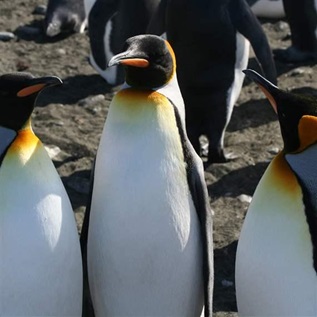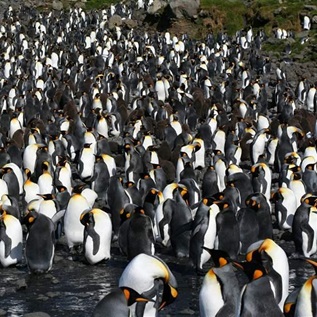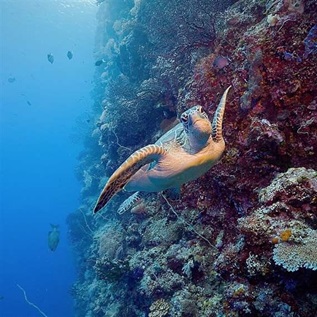President Bush's Ocean of an Achievement
With the stroke of a pen, President George W. Bush recently created three marine monuments in the Pacific Ocean, including one covering most of the famed Mariana Trench, the deepest place on Earth. Together with a monument established two years ago in the Northwest Hawaiian Islands, this marks the end of an era in which humans have increasingly understood the need to conserve vanishing wild places on land but failed to comprehend the similar plight of our oceans. It comes none too soon.
Now, 137 years after the creation of America's first national park in Yellowstone, in 1872, we're finally recognizing that unique areas of the world's oceans deserve the same kind of protection. Industrial fishing, drilling, pollution, and now climate change, are rapidly transforming the world's marine domain.
An ever-dwindling number of places, many of which are remarkably fragile, have not been affected by people. If not protected soon, they will become part of the large toll that nature has suffered in the wake of human settlement and development.
The new monument designations encompass Rose Atoll in American Samoa, most of the Equatorial or Line Islands in the central Pacific and portions of the Mariana Islands. Covering almost 200,000 square miles, these three new monuments roughly equal the size of Spain.
Together with the earlier reserve in Hawaii, this president has protected more of the oceans' unique places than any other person in history.
The importance of these ecosystems cannot be emphasized enough. In the Marianas, perhaps the most significant of the monuments, coral reefs overlap with some of the world's most exceptional geology, creating the greatest diversity of seamount and hydrothermal vent life known to science.
It's the sole place on Earth with huge, active mud volcanoes, one more than 31 miles across, which are believed to harbor some of the oldest known life on the DNA tree. The second boiling pool of liquid sulfur ever discovered (the first is on Io, one of Jupiter's moons) lies within its waters, along with the only bird known to use volcanic heat to incubate its eggs, and the giant coconut crab — the largest land-living arthropod in the world.
The other monuments also harbor a remarkable array of life. Rose Atoll contains the highest percentage of live coral cover of any place on Earth, while the Equatorial Islands host some of the largest populations of apex predators found in the oceans.
The remoteness of these places might seem to offer them protection enough, but the march of human society is steadily opening up areas long considered to be impenetrable or simply not worth the trouble. In 1857 the leader of a War Department expedition described the Grand Canyon as ''altogether valueless,'' adding that ''after entering it there is nothing to do but leave.''
Fortunately, President Theodore Roosevelt thought otherwise. Designating it a monument in 1908, he called it ''a natural wonder which, so far as I know, is in kind absolutely unparalleled throughout the rest of the world.''
''Leave it as it is,'' Roosevelt urged. ''You cannot improve on it, and man can only mar it. What you can do is to keep it for your children, your children's children, and for all who come after you.''
The same rings true for these unique areas of the oceans protected by President Bush today. In weighing the long-term benefits to the marine environment and to the American people of protecting these places before they are ruined, the president decided they are worth more intact than whatever commercial benefits might be derived from fishing, drilling or mining them.
The president's decision is a tribute to common sense. We will gain immeasurably more from having these places kept safe than we would from plundering in the short term whatever commercial resources they might contain. Moreover, there is an inherent value in wild places that transcends their importance for science, education, recreation and the ecosystem services they provide — although these are reason enough to leave them be.
We value them precisely because they have not been shaped by us, but reflect the natural world when left to its own devices. Thankfully, this president, and most Americans, want to see some places on Earth remain this way.











